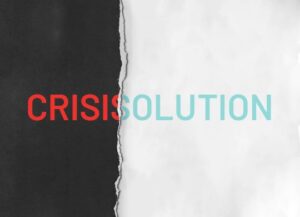Over the course of history, technology has drastically changed many things – the way we work, travel, cook, read, and probably most considerably, the way we communicate. Right before the turn of the century, mobile phones had just become mainstream. Before that time, we were locked to landlines, relying on wired phones, payphones, and fax machines to stay connected. When it came to staying informed, we looked to the morning newspaper or evening news for the latest updates on what was happening in our town and around the world.
Today, our phones, tablets, and laptops serve as our lifelines, keeping us connected, productive, entertained, and updated. We have immediate access to information 24 hours a day with a few clicks on our devices.
So how has this shift changed public relations – the discipline that once so heavily relied on the media to report the news to the general public?
PR operates at a much more intense, engaged, and time-sensitive level, and the power of communicating to large target audiences no longer lies in the hands of journalists. Social media has empowered everyone to share news, tell stories, recommend their favorite brands, and report bad experiences with others. Traditional media are no longer the gatekeepers to influential news stories. The Internet gave a voice to those that previously could often not be heard – each and every one of us.
Public relations has a different set of tactics compared to what was available just a few short years ago. Social media, influencer marketing, online media monitoring, online reputation management, and other tools are now important aspects of any PR strategy.
Here’s a look at a few key areas where technology has impacted the role of PR.
Press Releases
The value of a press release or media pitch no longer relies on if it results in a “hit” in the news. A press release, when distributed over the wire, pushed out on social media, or posted on a website, creates results through SEO and online brand equity. Press releases continue to be an integral part of PR, and, if anything, they have greater significance in today’s online information world. But don’t start churning out releases just for the sake of it. Releases still need to have relevance and news value to your readers. Keep them timely, on topic, and applicable to your target audience.
Communications Tools
We have what seems like a million channels to send and receive information, from social media platforms, chat boxes, and texting apps to emails, videos, and streaming media. The challenge for PR professionals is to determine how to reach target audiences when there are so many different options. Companies must consider all the touchpoints consumers have with their brand and identify – through testing and adjusting strategies – the most effective channels to reach and engage with them. For the most effective public relations results, find the platforms where you can connect and engage with your audiences in an authentic and substantive way and sustain that level of communication over time.
Credibility
Consumers have access to a lot – let me repeat that, A LOT – of information. Data, opinions, reviews, updates, ratings, alerts, promotions… so much information that we’ve become extremely skeptical of what we see and hear. Through PR, companies can earn trust and prove their credibility by providing accurate, trustworthy, and up-to-date information, while also engaging with customers. Loyal customers who have a positive experience with your company or brand will become your best PR resource. Why? Studies show that our peers have become our most trusted source of information. Keep it real and credible.
Speed
Gone are the days of mailing or faxing press releases and waiting days – even weeks – for a story to make the news. Now, news hits immediately and requires PR professionals to consistently monitor conversations along with their sentiment and impact on a company’s brand. Reputation management takes on a more critical role, and negative situations have a very short window of address. Where companies used to have hours, or even days, to respond to a crisis situation, today’s environment requires almost immediate action and responses. On the flip side, getting an important announcement out can happen quickly with messages spreading wider and faster through social media and other online tools.
Engagement
News used to be a one-way street – they reported it, we received it. Now with so many platforms to communicate with consumers, it’s a two-way avenue. Social media and online tools allow you to engage with your customers, respond to complaints, show gratitude for their support and loyalty, and connect and share information on a regular basis to build relationships. Never before has it been so easy to start a dialogue with your customers. In addition, PR professionals should be listening to conversations that are happening online relevant to your brand and industry and respond with well-planned, strategic messages.
Measurement
We used to measure PR success by scouring newspapers and magazines for media coverage. With today’s digital media and technology, measuring the results of your PR efforts is more attainable. Using online tools and metrics, you can measure different results, from web traffic and leads to social media engagement and increased followers. There are media monitoring tools that compile information and provide reports on online mentions, sentiment of coverage, reach, impact, and so much more.
The primary goal of public relations remains the same: to improve a company’s brand reputation and recognition through increased visibility among its target audience. What has changed is how we achieve our PR goals using new technology. Websites gave us our own platforms for sharing news and information. Social media introduced a new way to sway public opinion through influencer marketing, user-generated content, and peer reviews. As technology continues to evolve, so will PR. PR professionals will continue to be strategic and use technology and tools to effectively communicate, engage, and influence the public.








